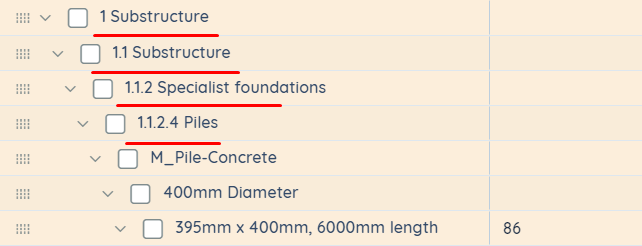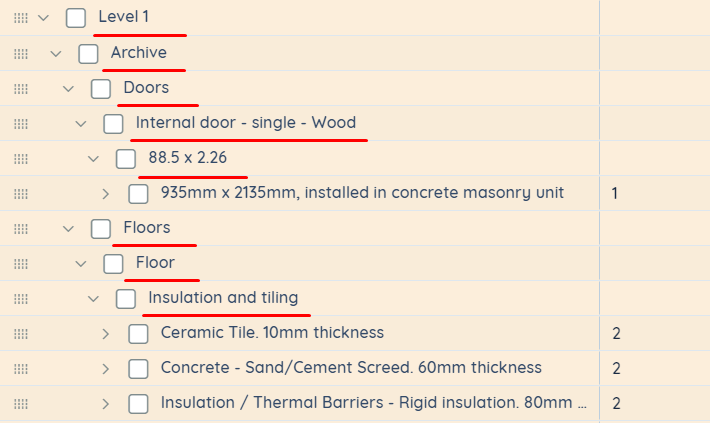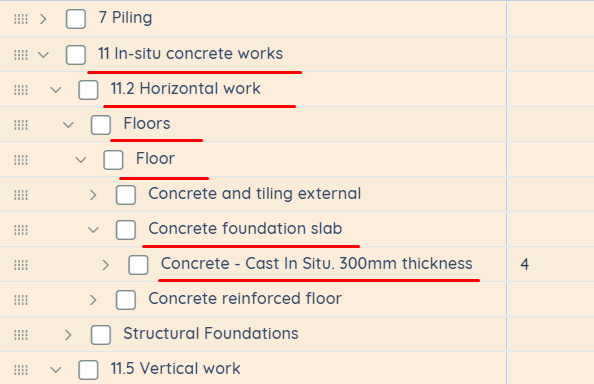
With the help of default reports, Kreo groups elements according to certain rules. The choice of rules depends on the type of report you select:
1. Revit BS is a grouping of elements according to the standard Revit structure:
Category - Family - ElementType - Layer + Extra properties / Extra properties.

2. NRM1 (elemental) BS is a grouping of elements according to the standard British system of classification - New Rules of Measurement (NRM1):
NRM1 Level 1 - NRM1 Level 2 - Category - Family - ElementType - Extra properties (for simple, non-layered objects) OR Layer + Extra properties (for layered objects).

3. NRM1 (elemental) detailed BS is similar to NRM1 (elemental) BS, but all four levels of NRM1 are represented here:
NRM1 Level 1 - NRM1 Level 2 - NRM1 Level 3 - NRM1 Level 4 - Category - Family - ElementType - Extra properties (for simple, non-layered objects) OR Layer + Extra properties (for layered objects).

4. Location BS is a grouping of elements by rooms and floors:
Storey - Room - Category - Family - ElementType - Extra properties (for simple, non-layered objects) OR Layer + Extra properties (for layered objects).

5. NRM2 (work) BS is a grouping of elements according to the standard British system of classification - New Rules of Measurement (NRM2):
NRM2 Level 1 - NRM2 Level 2 - Category - Family - ElementType - Extra properties (for simple, non-layered objects) OR Layer + Extra properties (for layered objects).
